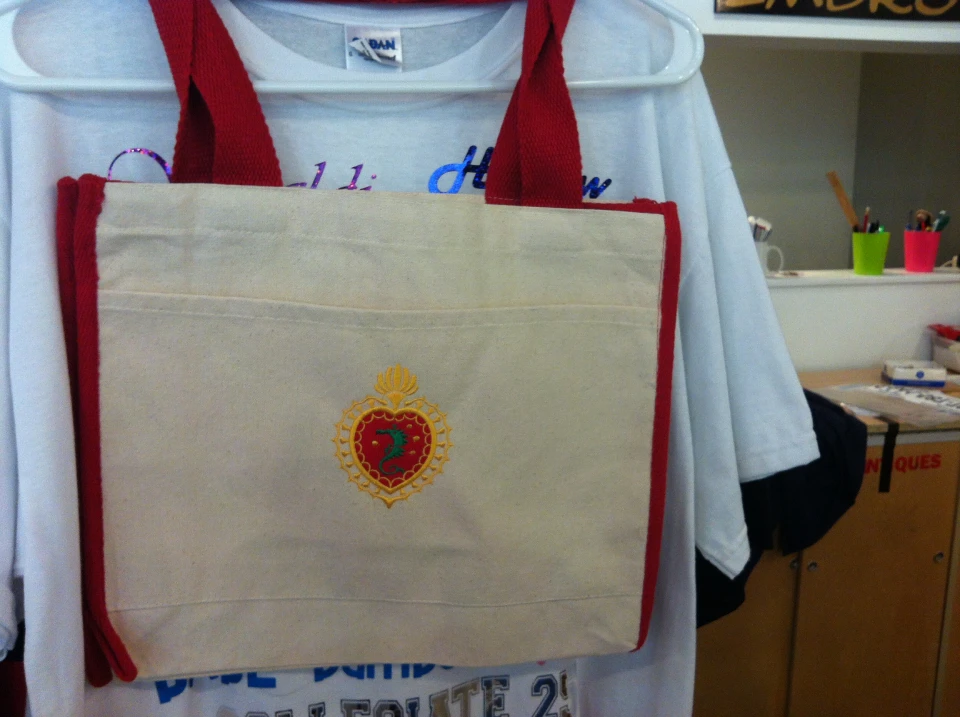The Art of Custom Embroidery: Unlocking the Tricks to Creating Special and Memorable Designs
The keys to developing custom embroidery styles that mesmerize the eye and leave a long-term impression lie in a delicate equilibrium of method, creative thinking, and interest to information. As we dig right into the world of custom-made embroidery, we discover the nuanced interplay in between thread selection, stitch complexity, and design personalization that boosts a plain garment to a work of art.
Choosing the Right Needlework Threads
When picking needlework threads, what essential elements should you think about to make sure the ideal results for your custom layouts? The choice of needlework string is essential in establishing the last outcome of your stitched style. One of the primary factors to consider is the product of the thread. Different products such as cotton, polyester, rayon, and silk supply varying degrees of sheen, longevity, and texture. It is essential to choose a thread product that matches the fabric you are embroidering on and straightens with the preferred appearance of the layout.
Thicker threads can include measurement and structure to your design, while finer strings are optimal for elaborate information and little message. Furthermore, taking into consideration the shade fastness and washability of the thread is important to ensure that your personalized styles preserve their high quality and vibrancy over time.
Exploring Various Stitch Methods
To look into the realm of 'Checking out Different Stitch Strategies', one must realize the details and subtleties that each stitching approach offers the art of embroidery. Various stitch methods not only add aesthetic interest yet likewise contribute to the total appearance and measurement of the design. One preferred stitch strategy is the satin stitch, which entails carefully packed parallel stitches to create a smooth and shiny surface, suitable for completing shapes and developing vibrant describes.
On the other hand, the backstitch is a versatile strategy usually utilized for outlining and adding fine information. It includes sewing backwards to produce a solid line of needlework. In addition, the French knot stitch includes a tactile aspect to styles, perfect for creating distinctive accents like flower facilities or attractive touches.
Checking out different stitch strategies permits embroiderers to play with light, darkness, and deepness within their layouts, elevating the visual appeal and imaginative quality of their needlework jobs. By understanding different stitching techniques, one can open countless possibilities for creating unique and unforgettable reference customized embroidery items.
Incorporating Personalized Design Elements
Having explored the ins and outs of go different stitch methods such as the satin stitch, backstitch, and French knot, the focus now changes in the direction of incorporating tailored design aspects in personalized embroidery tasks. Customized style aspects play an essential role in making embroidery jobs really one-of-a-kind and remarkable. One method to include customization is by including initials, names, or considerable dates to the style. This not just adds a customized touch however likewise boosts the emotional value of the needlework item.
One more means to include tailored style components is by consisting of signs or motifs that hold special significance to the recipient or mirror their interests and personality. Including a preferred flower, animal, or hobby-related icon can make the embroidery style more purposeful and personalized. In addition, picking colors that resonate with the recipient or align with the designated theme can even more enhance the personalization of the embroidery project.
Understanding the Art of Color Sychronisation

One trick element of color control is understanding shade theory. This consists of understanding how different shades interact with each other, the emotions they share, and exactly how they can be combined to create visually attractive designs. By applying color theory principles, embroiderers can create unified color palettes that boost the total look of the style.
Furthermore, focusing on contrast is vital in shade coordination. Making use of contrasting colors can help certain elements of the design pop, enhance clarity, and create a visually vibrant embroidery item. my blog By mastering the art of color control, embroiderers can elevate their styles and develop unforgettable items that reverberate with clients and viewers alike.
Enhancing Texture With Advanced Needlework Stitches

French knots, for instance, are excellent for adding small, raised dots to your style, simulating the appearance of beads or producing a textured surface. Bullion knots, on the other hand, can be made use of to create twisted, ropelike components that add an elegant feel to the embroidery. Seed stitching involves tiny, scattered stitches that can complete locations with a speckled texture, while turkey work develops cosy, dimensional accents evocative pet hair or vegetation. Try out these sophisticated embroidery stitches allows you to push the borders of typical embroidery and produce really unique and visually attractive textures in your styles.
Final Thought
Finally, the art of personalized needlework includes a combination of choosing the best strings, checking out various stitch strategies, incorporating tailored style components, grasping color sychronisation, and boosting structure with sophisticated stitches. By understanding and carrying out these crucial elements, embroiderers can produce special and unforgettable layouts that showcase their creative thinking and ability. Embroidery lovers can unlock the tricks to developing stunning and bespoke pieces that stand apart and leave a long lasting perception.